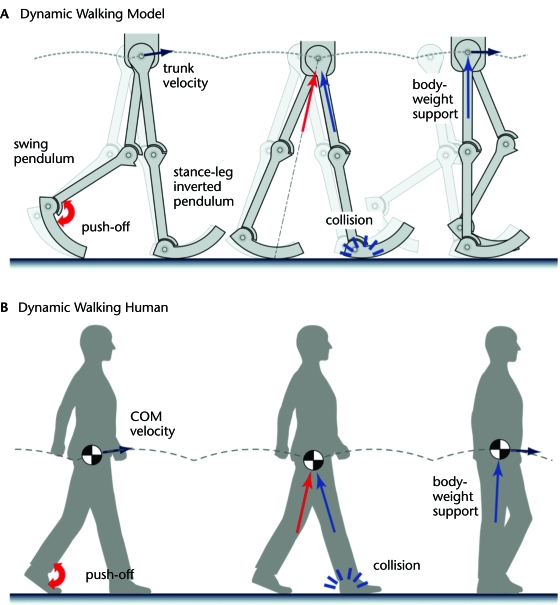Figure 3.
Dynamic walking relies on passive leg dynamics to drive most or all of gait. (A) Dynamic walking uses the ballistic motions of the stance and swing legs behaving like pendulums, extended to a fully periodic motion. The collision of the leading leg with the ground redirects the body center of mass (COM) and initiates the subsequent step. (B) Dynamic walking also is thought to apply to humans, where passive dynamics allow much of gait to be produced with no work and body weight to be supported with little muscle force. Collision losses nevertheless must be offset by positive work, much of it at push-off.42

